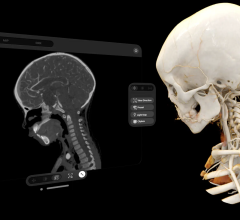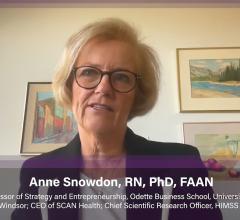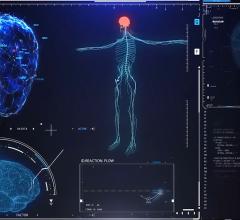
February 27, 2012 - The U.S. Department of Health and Human Services (HHS) announced the next steps for providers who are using electronic health record (EHR) technology and receiving incentive payments from Medicare and Medicaid. These proposed rules, from the Centers for Medicaid and Medicaid Services (CMS) and the Office of the National Coordinator for Health Information Technology (ONC), will govern Stage 2 of the Medicare and Medicaid Electronic Health Record Incentive Programs.
“We know that broader adoption of electronic health records can save our healthcare system money, save time for doctors and hospitals, and save lives,” said HHS Secretary Kathleen Sebelius. “We have seen great success and momentum as we’ve taken the first steps toward adoption of this critical technology. As we move into the next stage, we are encouraging even more providers to participate and support more coordinated, patient-centered care.”
Under the Health Information Technology for Economic and Clinical Health (HITECH) Act, part of the American Recovery and Reinvestment Act of 2009, eligible healthcare professionals and hospitals can qualify for Medicare and Medicaid incentive payments when they adopt certified EHR technology and use it in a meaningful way. What is considered “meaningful use” is evolving in three stages:
• Stage 1 (which began in 2011 and remains the starting point for all providers): “meaningful use” consists of transferring data to EHRs and being able to share information, including electronic copies and visit summaries for patients.
• Stage 2 (to be implemented in 2014 under the proposed rule): “meaningful use” includes new standards such as online access for patients to their health information and electronic health information exchange between providers.
• Stage 3 (expected to be implemented in 2016): “meaningful use” includes demonstrating that the quality of healthcare has been improved.
CMS’ proposed rule specifies the Stage 2 criteria that eligible providers must meet in order to qualify for Medicare and/or Medicaid EHR incentive payments. It also specifies Medicare payment adjustments that, beginning in 2015, providers will face if they fail to demonstrate meaningful use of certified EHR technology and fail to meet other program participation requirements. In a November 2011 “We Can’t Wait” announcement, HHS outlined plans to provide an additional year for providers who attested to meaningful use in 2011. Under the current proposed rule, Stage 1 has been extended an additional year, allowing providers to attest to Stage 2 in 2014, instead of in 2013. The proposed rule announced by ONC identifies standards and criteria for the certification of EHR technology, so eligible professionals and hospitals can be sure that the systems they adopt are capable of performing the required functions to demonstrate either stage of meaningful use that would be in effect starting in 2014.
“Through the Medicare and Medicaid EHR Incentive Programs, we’ve seen incredible progress as over 43,000 providers have received $3.1 billion to help make the transition to electronic health records,” said CMS Acting Administrator Marilyn Tavenner. “There is great momentum as the number of providers adopting this technology grows every month. Today’s announcement will help ensure broad participation and success of the program, as we move toward full adoption of this money-saving and life-saving technology.”
“The proposed rules for Stage 2 for meaningful use and updated certification criteria largely reflect the recommendations from the Health IT Policy and Standards Committees, the federal advisory committees that operate through a transparent process with broad public input from all key stakeholders. Their recommendations emphasized the desire to increase health information exchange, increase patient and family engagement, and better align reporting requirements with other HHS programs,” said Farzad Mostashari, M.D., ScM, national coordinator for health information technology. “The proposed rules announced today will continue down the path Stage 1 established by focusing on value-added ways in which EHR systems can help providers deliver care which is more coordinated, safer, patient-centered, and efficient.”
The number of hospitals using EHRs has more than doubled in the last two years from 16 to 35 percent between 2009 and 2011. Eighty-five percent of hospitals now report that by 2015 they intend to take advantage of the incentive payments.
Several key medical societies offered input on during the development of the Stage 2 rules.
“CMS made the right decision in delaying Stage 2 implementation to give physicians, practices and hospitals more time to adjust to the new requirements,” said William Oetgen, M.D., MBA, American College of Cardiology (ACC) senior vice president, science and quality. “We are encouraged to see that CMS has included reporting to specialized registries as one of the proposed menu-set objectives and look forward to reviewing the proposed standards and certification requirements that will help to implement this new objective. As we continue to review the proposed regulation, we hope we will find additional thoughtful changes to the program that will promote an efficient, patient-centered healthcare community rather than increasing healthcare complexity. We appreciate CMS’ consideration of our input and the recognition of the importance of specialty society registries.”
He said the ACC supports the use of health information technology as an important tool for providing high quality patient care. “To ensure that health IT is properly implemented, the requirements for meaningful use must be deliberate and specifically tailored to ensure that decisions are not made merely to capture incentives, but to change the way care is furnished in this country,” Oetgen said.
A technical fact sheet on CMS’s proposed rule is available at www.cms.gov/apps/media/fact_sheets.asp.
A technical fact sheet on ONC’s standards and certification criteria proposed rule is available at www.healthit.gov/policy-research.
The proposed rules announced today may be viewed at www.ofr.gov/inspection.aspx. Comments are due 60 days after publication in the Federal Register.


 May 01, 2024
May 01, 2024 








